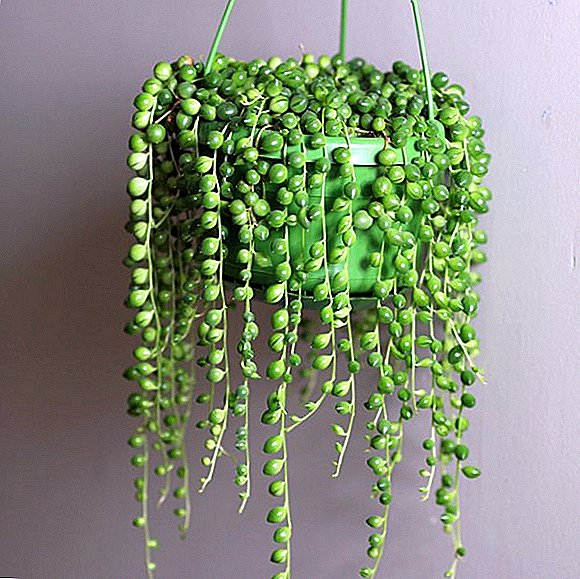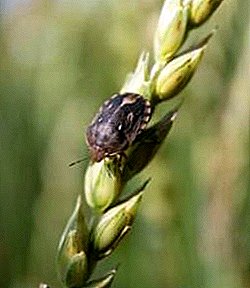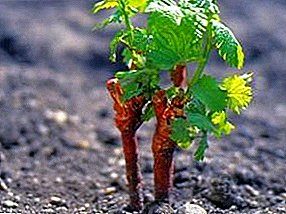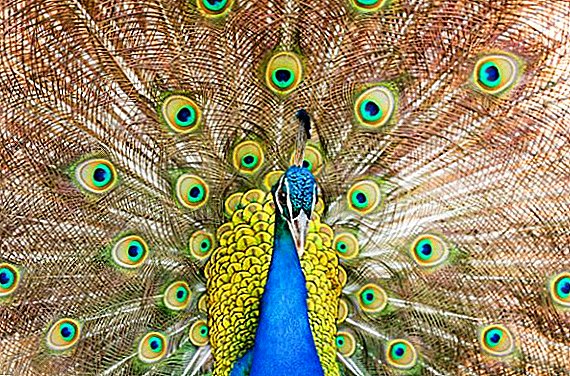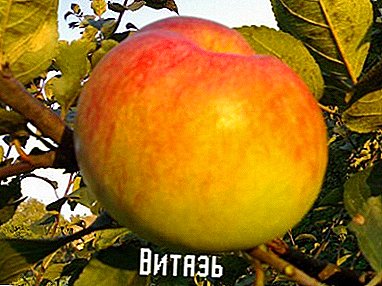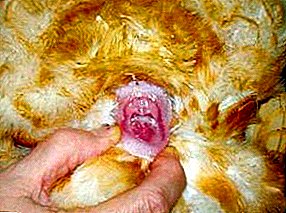
Laying eggs is a very important physiological process for every poultry.
In case of any problems with laying eggs, the chicken starts to feel bad, gradually exhausted and dies.
Especially life-threatening layers are inflammation and prolapse of the oviduct.
What is the prolapse of the oviduct in chickens?
The prolapse and inflammation of the oviduct is characterized by a complete cessation of egg-laying. Sometimes it is possible without a detailed examination to notice that the bird fell oviduct. When it begins to interact with the external environment, the chicken has a higher chance of becoming the victim of infection with ordinary pathogens.
In this case, the bird is rapidly deteriorating state of health, which may subsequently lead to death. As a rule, young hens of all breeds are most often affected by this disease. This is especially true for young chickens of egg breeds.
What is dangerous?
 This disease began to manifest itself in the hens almost immediately after the man started keeping birds on large poultry farms.
This disease began to manifest itself in the hens almost immediately after the man started keeping birds on large poultry farms.
In such places, the risk of developing various infections increases, so chickens are more likely to suffer from inflammation and prolapse of the oviduct.
Immediately after the onset of the disease, the chickens stop laying eggs.. Since this disease most often affects young layers of egg-bearing breeds, the farm begins to lose financial resources.
Moreover, the mortality rate of young chickens increases, which directly affects the quality of reproduction of the bird population on the farm.
Causes of the problem
One of the possible causes of prolapse and inflammation of the oviduct can be called excess protein content on the background of a lack of vitamin D and E. Moreover, young laying hens have a serious metabolic disorder, which leads to the death of normal microflora in the oviduct.
Gradually, he becomes inflamed, which prevents the hen from laying eggs. Also on the body of a young hen are some inflammatory diseases. They not only weaken the entire body, but also negatively affect the number of eggs laid.
Another cause of this disease is wrong lighting. Veterinarians have long proved that different color spectra have a different effect on the condition of the bird. Using too bright white light annoys the bird, makes it more nervous, and the number of eggs laid gradually decreases.
Sometimes the cause of loss of the oviduct can be highly calorie food. Some novice farmers try to feed their poultry with too fatty food, hoping that this way it will grow faster and begin to rush faster.
Indeed, chickens start to fly earlier, but their oviduct is usually not sufficiently developed for passing eggs, so it becomes inflamed and falls.
 The famous Phoenix chicken is famous all over the world for its beautiful tail.
The famous Phoenix chicken is famous all over the world for its beautiful tail.If you notice difficult egg-laying in your chickens and you don’t know the reason, then you should read this article.
Longer daylight is another reason for the prolapse of the oviduct. Constant bright lighting in the hen-house creates the illusion of a long daylight in birds, so puberty comes earlier than usual. Unfortunately, the oviduct "does not have time" for the general development of the body, so young layers often suffer from inflammation.
Course and symptoms
 The first symptoms of inflammation of the oviduct are any problems associated with laying eggs.
The first symptoms of inflammation of the oviduct are any problems associated with laying eggs.
Gradually, the number of eggs laid per day decreases in the hen, and later on it completely ceases to lay them.
In a sick bird, the oviduct is so swollen that it begins to bulge in the cloaca. This condition rather quickly becomes the cause of loss of the oviduct.
Also sick bird can be distinguished by persistent diarrheawhich further aggravates her condition.
At the same time, all the feathers around the cloaca become very dirty, becoming a favorable environment for the reproduction of new microorganisms that cause inflammation.
In some particularly serious cases, the oviduct is clogged with cheesy masses. Usually, when the disease reaches this stage, the veterinarians do not undertake the treatment of the hens. They advise farmers to slaughter it, since complete recovery is almost impossible to achieve at this stage.
Diagnostics
Inflammation and prolapse of the oviduct is diagnosed after observing the behavior of the bird. In this case, a detailed examination can be carried out, which reveals a swelling in the area of the cloaca. In case of loss of the oviduct, a small part of it peeps out.
To determine the exact cause of this disease blood is being taken. It is sent for analysis to the laboratory, where it is determined which microorganism has become the causative agent. A study is also conducted to identify other factors that could contribute to the prolapse of the oviduct.
Treatment
 Unfortunately, the treatment of prolapse of the oviduct is very difficult. When an organ falls out, it automatically becomes more susceptible to the action of any external factors.
Unfortunately, the treatment of prolapse of the oviduct is very difficult. When an organ falls out, it automatically becomes more susceptible to the action of any external factors.
In some cases, sick birds help washing the oviduct with water and a 2% solution of tannin or alum. After that, you need to try to adjust it back. For this, the finger and the oviduct are lubricated with petroleum jelly and gently injected.
Sometimes such manipulations help the hens, and they return to their normal lifestyle. However, in the event that the fallout occurred again, the veterinarians advise to slaughter the chicken to avoid repeating the problem in the future.
Layers that suffer from inflammation of the oviduct without falling out can still be saved. If the inflammation started due to an infection, then veterinarians prescribe a certain course of antibiotics.
Prevention
 To prevent inflammation and prolapse of the oviduct, it is important to monitor the variety of food. It must be mineral supplements, vitamins B, A and E, and it is also important to give green fodder to chickens.
To prevent inflammation and prolapse of the oviduct, it is important to monitor the variety of food. It must be mineral supplements, vitamins B, A and E, and it is also important to give green fodder to chickens.
Young layers should be properly prepared for the first egg-laying. Within 3 weeks with the feed they need to give a solution potassium iodide (2 mg per adult bird).
Potassium can be replaced with choline chloride in the amount of 20 mg per hen. At the same time, it is very important to reduce daylight hours to 9 hours so that puberty does not accelerate too much.
Conclusion
Inflammation of the oviduct and its subsequent proliferation are diseases that are often found among young layers of egg breeds. It is they who are most susceptible to this unpleasant ailment, therefore, poultry breeders need to be especially attentive to the health of the hens, because the total income of the chicken farm depends on their productivity.


